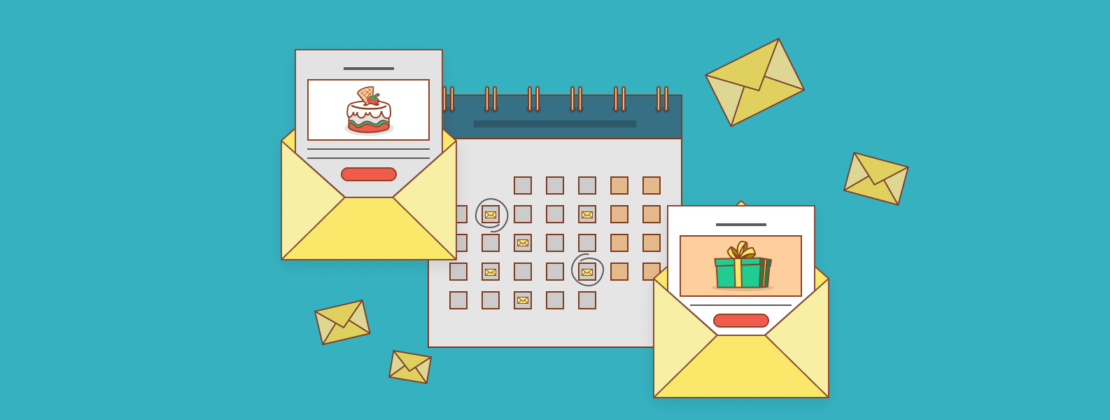Keeping a long-lasting relationship with customers should be the number-one priority for every email marketer. What is the trickiest in that task, apart from getting new subscribers? Right, nurturing them! If all you are planning to do is just to send well-designed weekly emails, we’ve got bad news for you: customer retention doesn’t work that way.
You’ll have to think of other ways to develop relationships and engage with your audience. One of the ideas is right here: try sending triggered emails dedicated to a specific milestone.
Content:
What is a milestone email?
While interacting with brands, all customers go through several stages — from a new subscriber to a regular buyer — which together form a customer lifecycle. Each stage of the customer lifecycle requires specific behaviour from brands: for example, they choose to greet new subscribers with a welcome email or wake up dormant users with a re-engagement campaign.
Milestone emails are automated messages that are a part of the lifecycle routine. Companies usually send them to existing customers on a specific occasion — birthday, a significant anniversary and so on. Since these triggered emails are highly personalised, they drastically boost response and conversion rates, generating up to 13% clicks that result in a purchase.
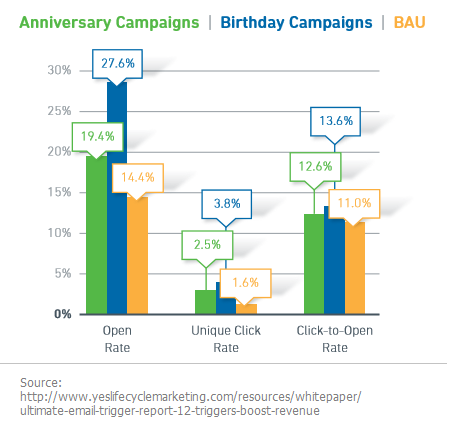
Any activity in email marketing needs a strategy, so before setting up a milestone triggered campaign, be sure to answer four simple questions.
1. Why are you going to send milestone emails?
It’s clear that your customers are supposed to get such emails because it’s their birthday or any other special occasion. But it’s more important to define the marketing goal of these emails. As a marketer, you may be seeking to improve customer engagement and loyalty, increase online traffic, or set up multiple purchases by sending birthday emails. While sending anniversary emails, for instance, you may set a goal of re-engaging inactive subscribers, improving customer retention, or reminding people about your services or goods.
2. What information do you need to gather?
Once your goal is clear, you’ll have to define the necessary milestones and settle your activity around these events. For birthday emails, you’ll need to collect customers’ birth dates or at least their birthday months, using different subscription forms. Anniversary emails, on their part, require users’ purchase information, subscription dates or membership details.
3. What are you going to send?
After you’ve answered two previous questions, it’s time to start crafting the email itself. Make sure it has an easy-to-read structure and brings a clear message. Manage your customers’ information to choose the most relevant content for the email.
4. When are you going to send your emails?
The content of an email defines the time it is to be sent. You can send your customer a simple birthday greeting on the very special day. But if you’re planning an email with a special offer or a discount, schedule it two days or weeks prior to the event, so that customers will have enough time to take action.
Now let’s take a closer look at five ideas for milestone emails you can try yourself.
Birthday emails
Adding a discount to birthday emails is a common practice; this is probably why they have 481% higher transaction rates compared to regular promotional emails.
For example, Topshop congratulated customers on their birthdays by offering 20% off online orders, also specifying the date when their offer would expire.
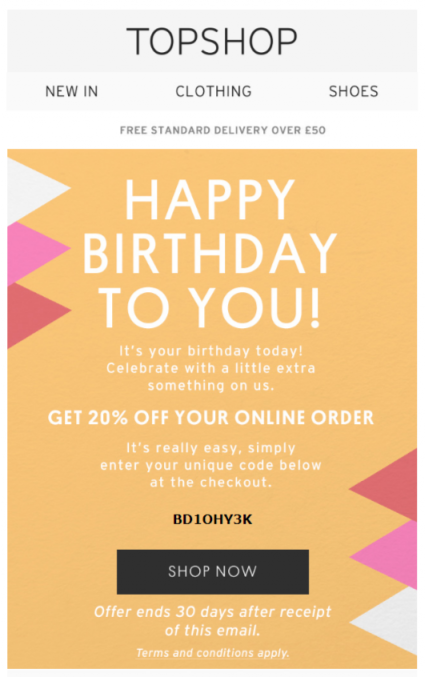
You can offer customers to choose the gift up to their taste and preferences — as Sephora did in their birthday email campaign. Not only did they offer a gift, but also invited a customer to visit their nearest store and get a free makeup as another birthday treat.
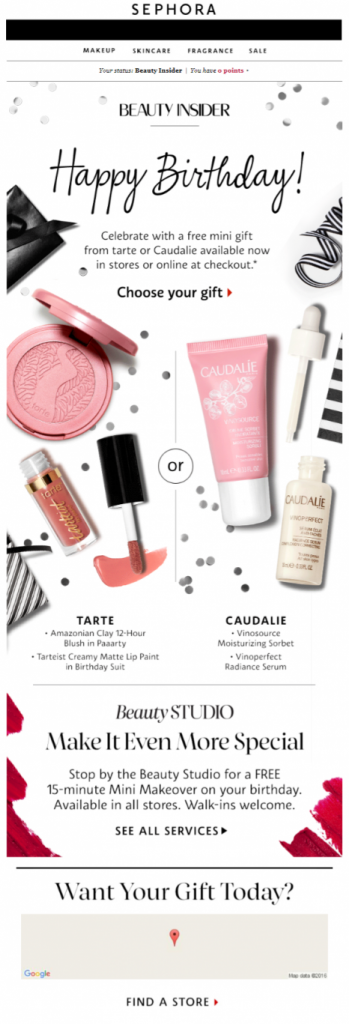
Keep in mind that birthday emails aren’t always about exclusive offers and discounts. First of all, it’s a chance to show you care about subscribers, so sometimes a few kind words would also be just as enough.
Jewellery brand Astley Clarke, for example, sent a simple email to a birthday person. The brand chose to fill their email with friendly wishes, showcasing their care. See, you don’t necessarily have to promote and sell.
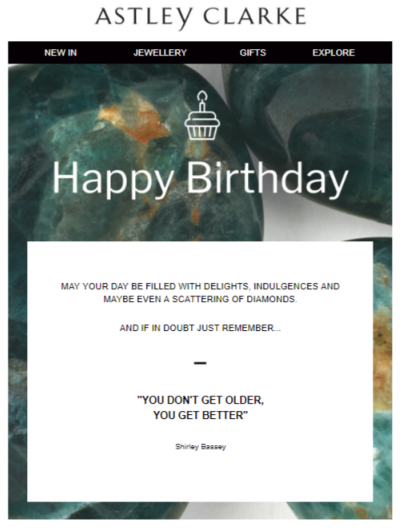
Anniversary emails
Birthdays aren’t the only special occasion to celebrate your customers’ engagement with your company. Include a discount or a special offer into your anniversary email to keep the subscribers in the game.
The Skimm turned to this idea in one of their milestone emails, presenting subscribers with freebies. In return, they expect customers to invite their friends to sign up.

Mud Pie, on their part, offered their subscribers to celebrate their anniversary with $10 off their next order. By doing so, they both show their appreciation for subscribers’ interest and keep the users engaged.
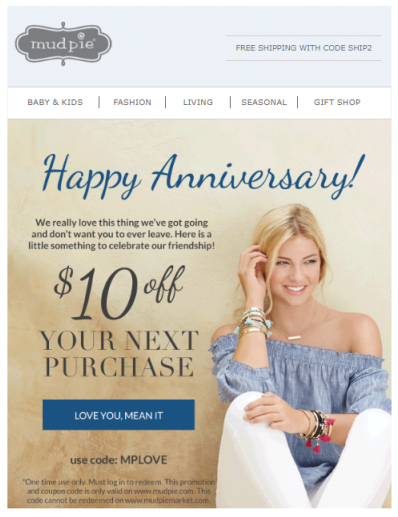
Final words
Building communication with your audience with the help of milestone emails is a way to highlight customers’ loyalty and engagement. Before you start crafting emails, figure out
- the reason — to win customers’ loyalty, wake up inactive users, or remind people about your brand;
- the required information — to specify the special dates to base your campaigns on;
- the content — to fill the email with information that is relevant and engaging for the user;
- the timing — to decide the most suitable time for a user to get your email.
And remember to use SendPulse to reach your marketing goals!
